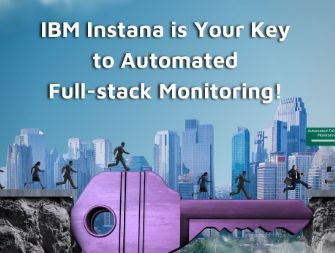August 2025 – Tokyo, Japan
There was a time when configuring a network meant logging into routers one by one, typing commands like a wizard, and hoping you didn’t accidentally bring down half the office. In 2025, that’s not just inefficient—it’s risky. Network Automation Software has replaced manual tinkering with policies, scripts, and AI-driven workflows that make networks faster, safer, and infinitely more reliable.
Why Network Automation Matters Now
Modern networks aren’t just bigger—they’re more complex. Hybrid and multi-cloud architectures, IoT devices, and remote workforces have turned yesterday’s tidy LAN into today’s global mesh.
According to Gartner, by 2027, 75% of enterprises will have implemented network automation to improve agility and reduce operational costs (Gartner, 2025). The key benefits:
-
Reduce human error (a major cause of outages).
-
Deploy changes across thousands of devices instantly.
-
Maintain consistent security and compliance policies.
Core Capabilities
-
Automated Provisioning: Instantly configure network devices with predefined templates.
-
Policy Enforcement: Apply consistent security, QoS, and access policies across all endpoints.
-
Change Management: Push updates without downtime using rolling deployment strategies.
-
Integration with NPM: Detect issues and trigger automatic fixes before users notice.
-
Self-Healing Networks: AI-driven systems that identify and resolve faults autonomously.
Business Impact
-
Telecom Providers: Automate service provisioning to cut customer onboarding from days to hours.
-
Financial Services: Reduce risk by ensuring every firewall adheres to the same rule set.
-
Retail Chains: Update Wi-Fi configurations across hundreds of stores in minutes.
A 2025 EMA report found that organizations using network automation experienced a 45% drop in configuration-related outages and saved an average of 2,000 labor hours annually (EMA, 2025).
Network Automation vs. Traditional Management
Manual network changes are slow, inconsistent, and error-prone. Automation ensures every change is tested, documented, and applied uniformly. Tools like Cisco DNA Center, Juniper Apstra, and Arista CloudVision are setting the standard, integrating automation into broader network orchestration platforms.
Challenges in Adoption
-
Skill Gaps: Network teams must learn scripting languages like Python or YAML.
-
Tool Integration: Automation platforms need to work seamlessly with monitoring, security, and cloud systems.
-
Change Resistance: Veteran admins may be wary of relinquishing manual control.
The Future of Network Automation
Expect tighter integration with intent-based networking (IBN), where administrators define the desired outcome and automation handles the implementation. AI will increasingly predict capacity needs, adjust routing for optimal performance, and preemptively block security threats.
As edge computing grows, automation will also handle the deployment and maintenance of thousands of distributed edge nodes—tasks impossible to manage manually.
Closing Thought
Network Automation Software takes the “busy work” out of networking, replacing guesswork with precision. In the race for agility and uptime, manual configuration is the horse-and-buggy—automation is the bullet train.
References (APA Style)
-
Gartner. (2025). Market Guide for Network Automation Tools. Retrieved from https://www.gartner.com
-
Enterprise Management Associates (EMA). (2025). State of Network Automation 2025. Retrieved from https://www.enterprisemanagement.com
-
Cisco. (2025). Cisco DNA Center Overview. Retrieved from https://www.cisco.com
Ren Satō – Contributing News Editor
Tokyo, Japan
Post Disclaimer
The information provided in our posts or blogs are for educational and informative purposes only. We do not guarantee the accuracy, completeness or suitability of the information. We do not provide financial or investment advice. Readers should always seek professional advice before making any financial or investment decisions based on the information provided in our content. We will not be held responsible for any losses, damages or consequences that may arise from relying on the information provided in our content.



